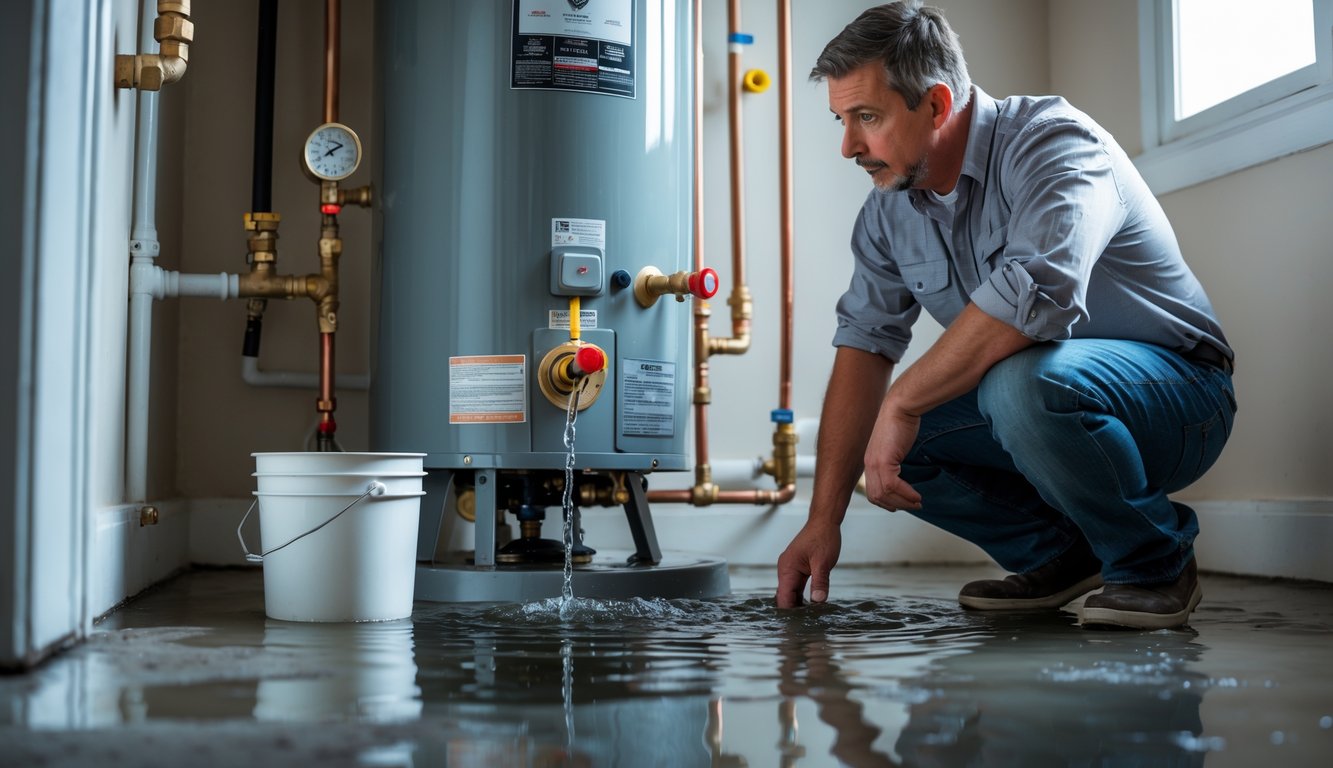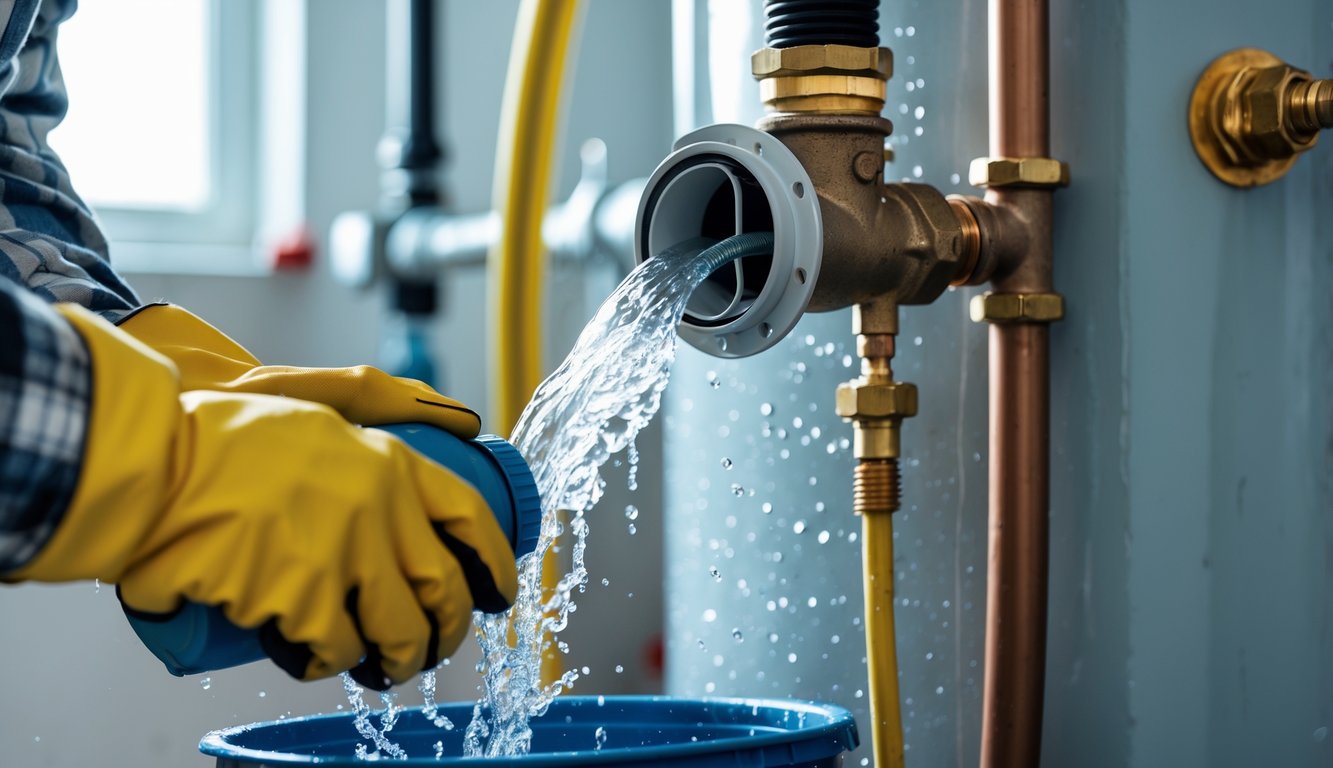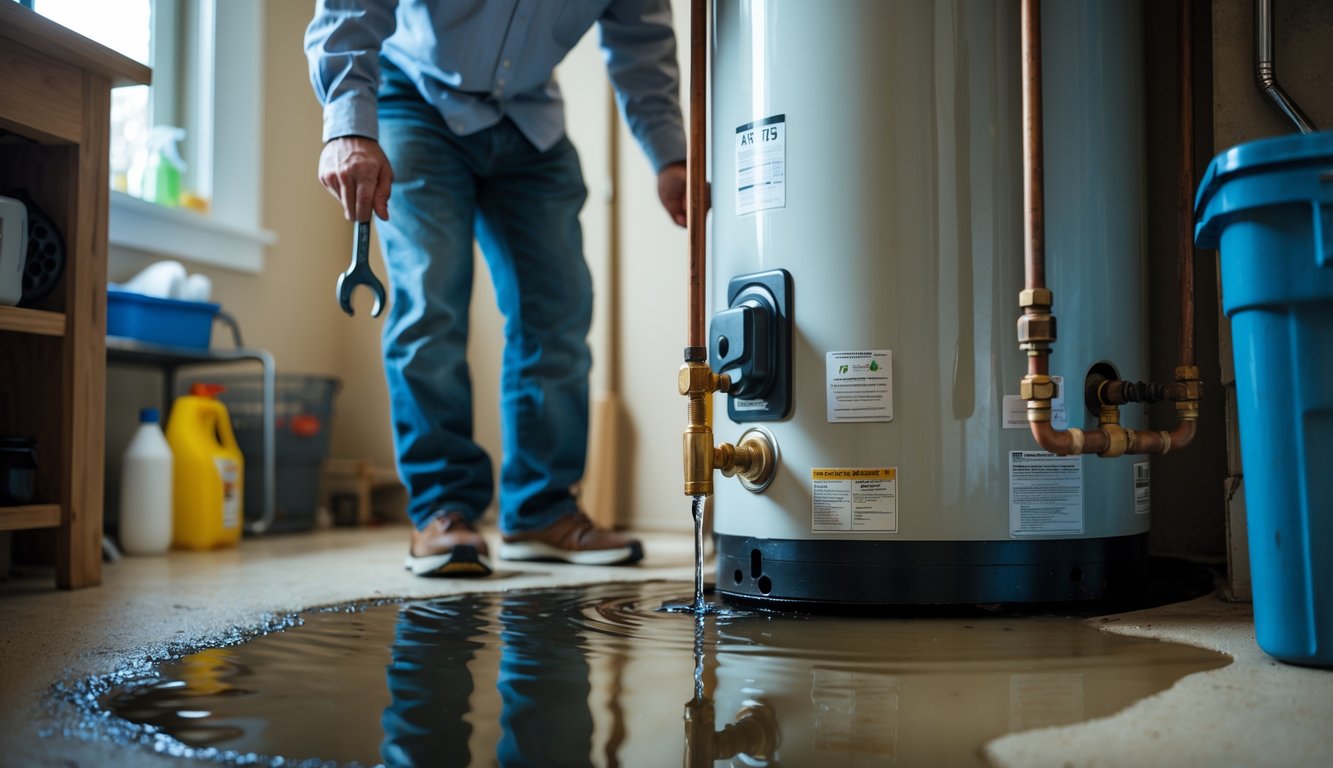
Draining and Flushing Errors That Lead to Leaks

You’d think flushing a water heater would be as easy as flipping a couple valves and grabbing a bucket. Nope. It’s always the little things—hose kinks, stuck valves, getting distracted by your phone—that turn a quick job into a full-blown puddle in the basement. Suddenly you’re Googling “emergency water heater replacement” at 2 a.m. or mopping up soggy boxes.
Improper Use of Drain Valves
Nobody warns you how pathetically fragile those plastic drain valves are. Twist too hard—maybe because it’s stuck, or you ignore the little “no tools” tag—and boom, you’ve got a slow leak. Rheem’s own data says over 15% of leaks come from overtightened or cross-threaded valves (Rheem Water Heater Service Guide, 2023). I watched my neighbor panic-tighten his valve until the threads stripped; now he thinks Teflon tape is a miracle cure for anything that drips.
And then there’s the genius move: open the drain valve with the supply still on. “More pressure, faster flush!” Except now the sediment blasts around, chews up the gasket, and you’re left with a leak. My plumber uncle always checks the rubber washer inside, but honestly, who thinks to do that? Just get a $6 brass replacement. It’s easier than dealing with a ruined valve seat and a wet floor.
Table:
| Drain Valve Mistake | Potential Leak Risk |
|---|---|
| Overtightening | Cracked threads/gaskets |
| Using tools (wrench/pliers) | Valve/core damage |
| Forgetting to close properly | Chronic, unnoticed drip |
| Leaving supply on | Sediment backflow, leaks |
Forgetting the Garden Hose Connection
Oh, and here’s a classic: nearly every “my water heater won’t drain” mess involves a garden hose older than the heater—cracks, moldy slime, loose threads. People just grab the first hose they see, twist it on, and wonder why there’s a puddle. Nobody checks for pressure loss. Half the time, the connector’s barely finger-tight, so water leaks right back toward the valve. There’s some “hack” about using two washers in a corroded hose, but I’ve never seen it actually work.
And don’t forget—if you don’t open the pressure relief valve or vent, you get a vacuum lock. The hose bulges, nothing drains, and then next time you try, the valve’s corroded or leaking. Sometimes the hose is so full of junk, you blast it right into your new drain valve and clog it instantly.
Why do people leave hoses out in the cold to stiffen and crack? Every winter, same story. The fix is obvious: swap out your hose every season. Costs less than one plumber visit and a lot less than a new tank.
Neglecting Safety Precautions During Flushing

What is it with people skipping the “little” safety steps during flushing—like it won’t matter if a valve’s stuck or the water’s still hot? There’s this awful moment when you realize your neighbor (or, fine, you) just ignored the two biggest safety issues: pressure and temperature.
Managing Water Pressure Safely
Nobody admits it, but draining a hot water heater with pressure inside is a recipe for disaster. First time I tried it, I couldn’t even find the pressure-relief valve—the label was missing. I’m still annoyed about that.
Supposedly, plumbers always check the TPR valve first. American Society of Home Inspectors says over 15% of those valves are stuck or broken. I learned way too late that skipping this step means you could get a jet of debris or a blown-out hose. Why doesn’t any checklist just say, “Turn off the main supply and power, and actually check for pressure?” Once, I used a bargain garden hose, watched it balloon up, and nearly burst. My plumber just shook his head—“No bargain hoses on hot water, ever.”
Oh, and don’t let the heater refill with all the valves closed. That’s how tanks split. Ask me how I know.
Handling Hot Water Risks
Everyone’s in a rush—just crank the drain valve, right? My cousin did that, got scalded. This isn’t “warm” water; tanks can hold water at 120°F, sometimes 140°F or more. CDC says third-degree burns happen in seconds at those temps.
Nobody told me you’re supposed to wait six hours (minimum!) for the tank to cool, but who does that? I tried flushing early once and the steam fogged up my glasses so fast I couldn’t even see the valve. OSHA says gloves and goggles aren’t optional, but I see people barefoot, balancing buckets, water everywhere. Never again.
And the relief valve? One slip and it sprays scalding water sideways. Someone online said “just use towels,” but even plumbers aren’t that reckless. Pausing to check the water temp isn’t overkill—it’s the difference between finishing the job and a trip to urgent care.